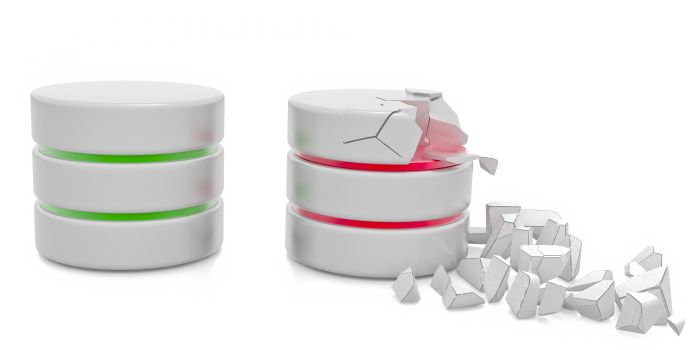There are obvious differences between a RAID array and a hard disk drive. A RAID array is a logical unit used for data redundancy or performance improvement by distributing data across multiple drives using parity, an error protection scheme. On the other hand, a hard drive is an individual data storage device used for storing and retrieving digital information. Just as there are differences in the function of devices, there is a difference in the rebuild process if an error or damage occurs.
RAID Rebuild Process
A RAID server failure is a serious matter because of the large amounts of data that this server system is capable of storing. Many businesses implement this redundant disk drive storage subsystem for business continuity and commercial data processing. When a RAID system failure occurs, it may be necessary to rebuild. RAID rebuilds re-create data on arrays when disks fail. These systems have built-in software to automatically monitor drives and enact rebuilding when a logical error occurs. The array can copy data from a damaged disk to a spare drive when an error is detected, allowing the failed disk to be replaced without no loss of data.
There are two scenarios where RAID will start a rebuild:
- An array determines that a hard drive will soon fail.
The array will copy the blocks of data block by block from the old drive to a spare drive and alert that the drive needs to be replaced. - A hard drive unexpectedly fails.
The array rebuilds using the parity data on the remaining drives and copies to a spare drive.
If the RAID rebuild doesn’t work on its own, it could be an indication of other issues that needs professional help. Issues with RAID servers are often very complex, and continued use of systems with problems can resort in significant loss of files.
Rebuilds for Hard Drives
If a hard drive experiences problems, there is the potential of losing critical information. Although a hard disk drive does not have a complex automatic rebuild process like the RAID array, it can attempt to address logical errors. A typical hard disk drives will try to “remap” data from a failing physical sector to a spare physical sector. Frequent occurrence of this sector remapping could indicate the potential for a hard disk failure. In the case of such logical errors, the hard drive may need to be reformatted. If the drive error or damage is physical, the device will most likely need to be replaced. Once the damage has been identified and fixed, the drive can be rebuilt with the backup data.
Data Recovery
Properly functioning hard drive services are essential for data file access. Companies that utilize RAID servers for large storage capacity are especially affected when those systems fail. Before any recovery process takes place, it is paramount that you have an evaluation done. The evaluation allows recovery specialists to determine the state of the drive and formulate a solution that best suits your needs and addresses individual problems.
It is possible to retrieve files with data retrieval services, but some customers will need to have hard drives rebuilt. Previous recovery techniques performed on hard drives can have a bearing on the data recovery process, so this is not work that customers should do on their own.
Whether you need a hard drive or RAID rebuild, data recovery professionals can assist using advanced tools and technology. They have the knowledge and experience required to successfully rebuild disk drives or RAID servers without the risk of losing data. Contact the experts to find solutions for small and large hard drive problems.
